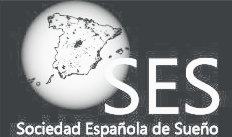Use of the sleep clinical record in the follow-up of children with obstructive sleep apnea (OSA) after treatment.
Villa MP, Sujanska A, Vitelli O, Evangelisti M, Rabasco J, Pietropaoli N, Banovcin P, Kheirandish-Gozal L, Gozal D. Sleep Breath. 2015 Nov 13
PURPOSE: The aim of our study was to evaluate the utility of the sleep clinical record (SCR) in the follow-up of children with obstructive sleep apnea (OSA) after treatment.
METHODS: SCR was completed and overnight polysomnography (PSG) was performed in all enrolled children (T0), with SCR considered positive for scores ≥6.5, as previously validated. Patients underwent adenotonsillectomy (T&A), rapid maxillary expansion (RME), and medical therapy according to severity of OSA and clinical features. Six months after completing therapy, the second overnight PSG and SCR (T1) were performed.
RESULTS: For all subjects, both Apnea-Hypopnea Index (AHI) and total SCR score decreased significantly (<0.005) from T0 to T1. For SCR items, clinical examination (item 1) and reported sleep respiratory symptoms (item 2) ameliorated significantly (<0.005). However, hyperactivity or inattention (item 3) decreased significantly (<0.005) after treatment only in T&A group, while no differences in AHI and SCR scores occurred in the medically treated group. At T1, SCR was positive in 95.6 % of children with AHI ≥1, with a concordance of 100 % in the T&A and RME groups, resulting in a positive predictive value of 100 %. A poor concordance (38.3 % in T&A group and 53.4 % in RME group) was found when SCR < 6.5. Children with SCR ≥ 6.5 at T1 showed higher AHI compared to patients with SCR < 6.5 (5.7 ± 5.9 ev/h vs 1.78 ± 1.76 ev/h; p < 0.005).
CONCLUSIONS: SCR emerges as a potentially useful instrument for follow-up of children with OSA after treatment.
Ventana Científica. Diciembre 2015. Artículo 117
Use of the sleep clinical record in the follow-up of children with obstructive sleep apnea (OSA) after treatment.


